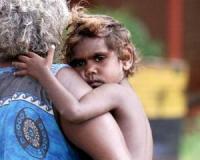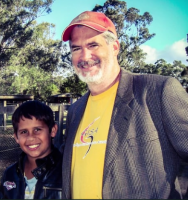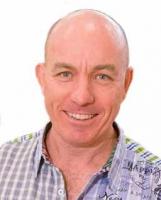People who as children were removed from their biological families are Australia’s highest risk group to suicide, writes suicide researcher Gerry Georgatos. They are four times as likely to kill themselves as the nation’s highest risk group, the Aboriginal and Torres Strait Islander population of the Kimberley, which is the world’s second highest risk group to suicide, behind Greenland’s Inuit peoples. "Despite all the good work done by many in saving lives, the suicide toll, particularly for the most elevated risk groups, is on the increase. The most elevated risk groups for Aboriginal and Torres Strait Islanders are individuals removed as children from their families, former inmates, the homeless and families evicted from public rental housing.
“When children are removed from their families because of alleged exposure to violence, dysfunction and other perceived aberrant behaviour they are not provided adequate healing and trauma informed counselling and restorative therapies."
Georgatos predicts that the Australian suicide toll will increase each year for many years to come. "During the last five years I have accurately estimated – sadly – the annual suicide toll and last year predicted that the 2015 toll would exceed 3,000 suicides. It will be higher for 2016.
"I accurately estimated the Aboriginal and Torres Islander suicide toll for each of the last five years and again it will be higher for 2016.
"There is no authentic response to the suicides crises – it is long overdue that a Royal Commission into Aboriginal and Torres Strait Islander suicides is established. Similarly, a central body should be established to authenticate the ways forward, an Australian Commission into Suicide Prevention and Wellbeing.
“It is important to establish such bodies if what we know works is to be further invested in, if what does not work is ceased, if what makes things worse is put to an end, if the inauthentic and carpetbaggers are weeded out, if disaggregation and deep understandings into high risk groups are to occur and the tailor-made ways forward identified and sponsored."
Dr Woolombi Waters, a Kamilaroi man, writer and lecturer at Griffith University in South East Queensland, wrote: "My childhood trauma is on the public record. I was not raised by my Aboriginal mother and for this I have suffered. Right throughout my life I have been victim to abuse.
“When I discuss, in detail, these abuses to my non-Aboriginal colleagues, to friends and to counsellors, many of them are taken aback, commenting on their inability to comprehend the depth, the extent of the trauma I have suffered.
“Unfortunately, my story is not unique – so many Aboriginal people suffer the same.
"To the world, I am a highly functioning individual, however I often relapse and return to the darkest days of my childhood. I would hide under my bed as a little fella escaping into a world of fantasy similar to the ‘The Lion, the Witch, the Wardrobe’ – it was my only means of surviving."
The National Aboriginal Community Health Organisation (NACCHO) has issued a report on the causes of death.
Preliminary 2015 statistics indicated that
- 152 (110 male, 42 female) Aboriginal and Torres Strait Islander people died by suicide, slightly more than the 143 (102 male, 41 female) recorded in 2014.
- Suicide was the 5th leading cause of death for Aboriginal and Torres Strait Islander people across New South Wales, Queensland, South Australia, Western Australia and Northern Territory, compared to the 12th leading cause of death for non-indigenous people.
- The standardised death rate for Aborigines and Torres Strait Islanders (25.5 per 100,000) was more than double the non-indigenous rate (12.5 per 100,000).
Sharon Jones, Co-chair of an Advisory Group for Suicide Prevention is quoted in the report: “The release of statistics showing suicide is again the leading cause of death for Australians aged 15-44 is a stark reminder of the need for a coordinated effort to reduce suicide in our communities. According to the Australian Bureau of Statistics, 3,027 Australians died by suicide in 2015 – a 5.4 per cent increase from the previous year. This is 3,027 too many.
“Sadly, suicide continues to disproportionately impact Indigenous communities, with Aboriginal and Torres Strait Islander people twice more likely to die by suicide than non-Indigenous people. Aboriginal and Torres Strait Islander young people in the 15-17 age-group had a suicide rate more than five times higher than their non-Indigenous peers. This is heartbreaking.”
"Youth suicide is a damning portrayal of the increasing sense of hopelessness – nearly 1 in 3 of the nation’s child suicides are of Aboriginal and Torres Strait Islander children despite where overall Aboriginal and Torres Strait Islanders comprise 1 in 17 of the Australian suicide toll," comments Georgatos.
"The sense of hopelessness for a significant proportion of Aboriginal and Torres Strait Islander children is a national disgrace, an abomination."
A Central Australia based clinical psychologist, Griffith University Professor, Tim Carey, director of the Alice Springs based Centre for Remote Health, has said in an interview with Aboriginal radio, “We can learn a lot from Aboriginal and Torres Strait Islanders about mental health and well being”.
Carey was involved in recently formulating a formal apology to Aboriginal and Torres Strait Islander people by the Australian Psychological Society which acknowledges psychology’s contribution to the erosion of culture and to their mistreatment.
He says in the interview that it was important to include in the apology that Aborigines and Torres Strait Islanders have an amazing resilience and are the proud custodians of the longest surviving culture on the planet.
More on this topic at https://groups.google.com/forum/#!topic/wgar-news/z6792TA7c9k




